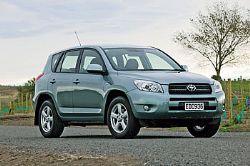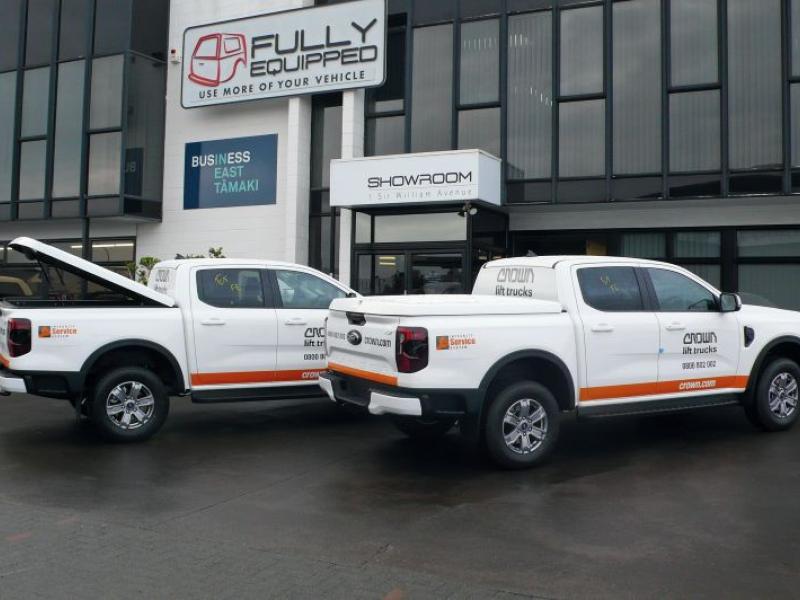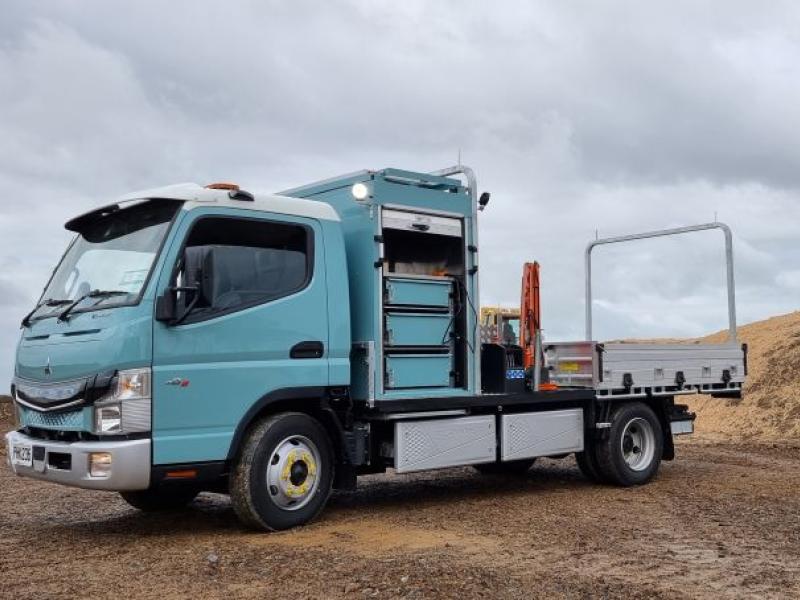The new RAV4 diesel has arrived and it’s frugal on fuel and considerate to the environment with its low emissions. Two obvious differences in this model when comparing it to its petrol sibling are its engine, and its size. RAV4 diesel introduces Toyota’s 2.2 litre, four cylinder in-line, 16 valve double over head cam common-rail diesel engine with an intercooler and turbo charger. This engine provides excellent performance and fuel efficiency while meeting Europe’s Euro-IV exhaust emission standards. Fuel consumption is a meagre 6.6 litres per 100 kilometres, some 27 per cent less than the petrol version, and CO2 emissions are 173 grams per kilometre using the 70/220/EEC (combined) test standard. The 2.2 litre turbo diesel engine has a power output of 100kW at 3600rpm and produces 310Nm of torque from 2000rpm. Engine noise and vibration are minimised by the inclusion of two balance shafts. Toyota’s D-4D system is the name of the latest diesel engine technology utilised in Toyota’s new RAV4 diesel and it stands for Direct injection, 4 stroke, common-rail Diesel. D-4D combines direct injection and common-rail diesel injection technology designed to provide higher power output, better fuel economy, lower exhaust emissions and lower noise and vibration than conventional diesel engines. In the past, diesel engines for passenger vehicles were designed using a secondary chamber or swirl chamber combining the air and fuel mixture before injection into the cylinder. These are known as indirect injection diesels and are still commonly used. With the increasing focus on reducing CO2 emissions engine designers have been developing direct injection systems offering superior combustion efficiency and improved performance. In a direct injection engine, the combustion energy is applied directly to the piston and the improved combustion efficiency provides a higher power output, better fuel economy and lower emissions than an indirect injection system. These direct injection diesel engines, although more efficient than their indirect injection forebears, can be prone to emitting black smoke at low speeds and are also significantly less refined due to diesel ‘knock’. However Toyota says their D-4D engine has been designed to overcome these issues. Direct injection requires highly pressurised fuel and a carefully measured amount of air, and this is provided through the use of a turbocharger and a common-rail system. With a common-rail fuel system, an extremely high fuel pressure is created in the supply pump and this is fed directly to the common supply rail located on the engine and connected to the injectors. Compared to previous diesel engines, the common-rail system supplies highly pressurised fuel injection even at low engine speeds. As the highly pressurised fuel exits the injector’s very small holes (about the same diameter as a human hair), the fuel is sent to the combustion chamber as an extremely fine spray resulting in increased power output, and improved fuel economy. In addition, a small amount of fuel is injected into the cylinder just before the main fuel load ignites. This “pilot burn” lowers the force of the main combustion process and helps to reduce the noise and vibration formerly associated with diesel engines. Overall dimensions of the new RAV4 diesel differ to the petrol variants. The width remains the same however the wheelbase is 100mm shorter the length is reduced by 205mm and the height 10mm lower. This new model comes with a lightweight and compact six speed manual transmission, providing a wide spread of gear ratios to achieve the best performance across all driving conditions. As with the current petrol variant, the new diesel RAV4 has Toyota’s active torque control four wheel drive system. An electronically controlled coupling located at the front of the rear differential controls the distribution of torque between the front and rear wheels, allowing the vehicle to switch continuously from front wheel drive to four wheel drive mode. This enhances stability and fuel economy by optimising the drive force to the front and rear wheels, according to the driving conditions. RAV4 diesel features Vehicle Stability Control plus (VSC+) as standard. In addition to a conventional VSC system, VSC+ integrates the braking system with the Electronic Power Steering (EPS) and the active torque control four wheel drive system for improved stability and control in all driving conditions. Safety is paramount in the new diesel powered RAV4 with driver and passenger front, side, front and rear curtain shield and driver’s knee airbags as standard equipment. The diesel RAV4 was designed for Europe and has a number of features that differentiate it from the petrol model. Rear fog lights and a factory fitted audio unit incorporating a six disc in dash MP3/WMA compatible CD player are standard specification as is climate controlled air conditioning. The air conditioning system incorporates a pollen removal mode to filter air and remove pollen from the cabin area. Within the interior, the RAV4 diesel model has a new glovebox cooler, rear view mirrors with heaters and a retracting function, a manual headlight levelling switch and an off switch to manually disable the front passenger airbag. Additionally, this model has a multi information display providing drivers with information such as fuel consumption, driving range, average speed travelled and outside temperature. 17 inch five spoke alloy wheels fitted with 225/65 tyres are standard on this model. With a shorter wheelbase, this model RAV4 can achieve a turning circle of only 10.2 metres allowing easy parking. Braked towing capacity has increased by 500 kilograms over the petrol models to 2000 kilograms with a braked trailer. Unbraked towing capacity remains unchanged at 750 kilograms. Interior seat fabric is the same as that of the petrol RAV4 Limited model, and this new diesel model is available in a choice of eight exterior colours. Pricing for the RAV4 diesel six speed manual is $45,990 and as with all new Toyota’s come with a 3 years or 100,000 kilometre warranty.
Economical Rav4 with less emissions
Vehicle Fitout
Sunday, 03 August 2008
File Download:






